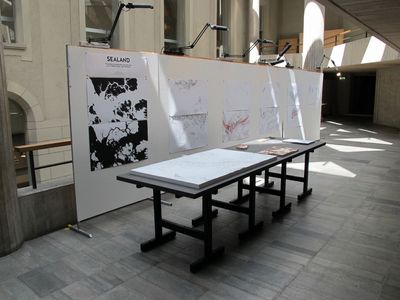SealandTowards Singapore Johor Riau as a Trinational MetropolisMagnus Nickl and Verena Stecher
The Singapore Strait can be seen as an extraordinary urban space, an example par excellence of the phenomenon of urbanisation of the sea. At any moment in time, there are over 1,000 ships within the port limits of Singapore. Shipping fairways, anchorage zones, port terminals, petrochemical installations and security networks occupy the sea surface, coastal zone and submarine space, resulting in a densely used and highly regulated urbanism of global shipping: the territory of the “global sea.” This urbanisation process exerts pressure on the remaining pockets of the “local sea” in the region, the natural coastline, the traditional settlement, and the marine ecosystems.
Today, the maritime territories surrounding Singapore are defined by a hierarchy of borders, separating the city from the Riau Archipelago and Johor, and vice versa. The highly utilized and secured national waters can be seen as part of an extended border zone which stretches from the sea onto the land. In the urban form of Singapore, the major urban public spaces have retreated inland, and public access to the coastline and the sea is still very limited. This paradox constitutes a major opportunity for rethinking Singapore’s future relationship to the sea.
Through a series of maps and plans of the sea, the master thesis Sealand presents an unconventional portrait of the Singapore Strait as an urban territory.
